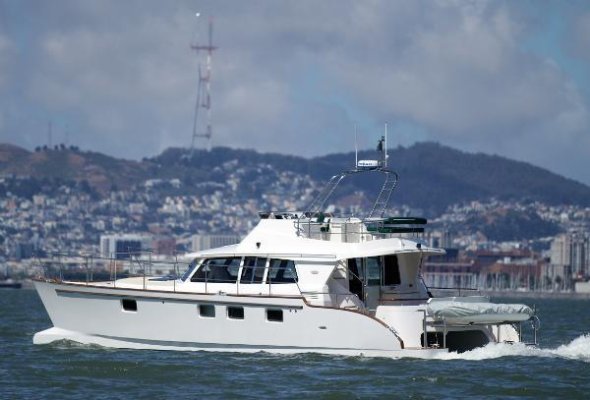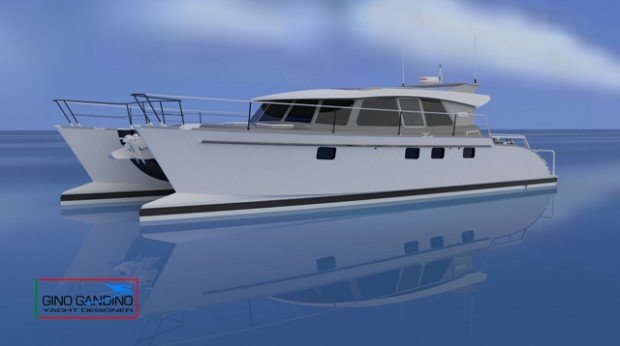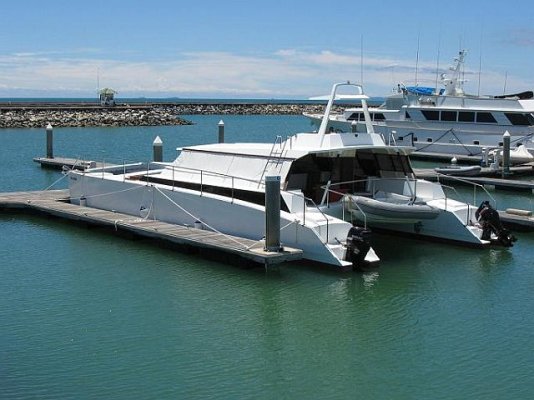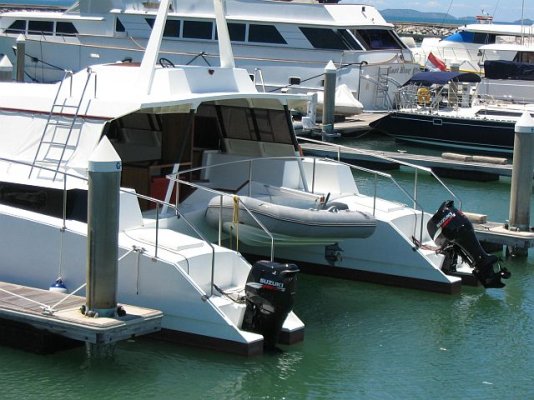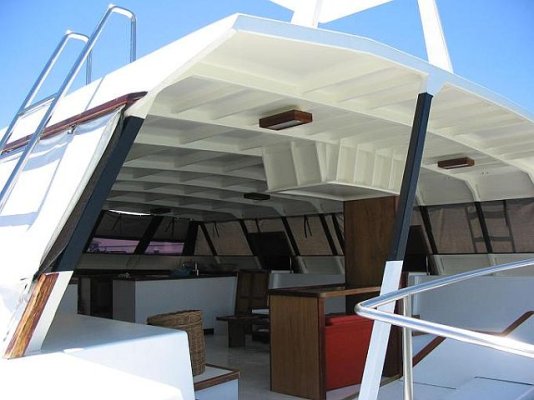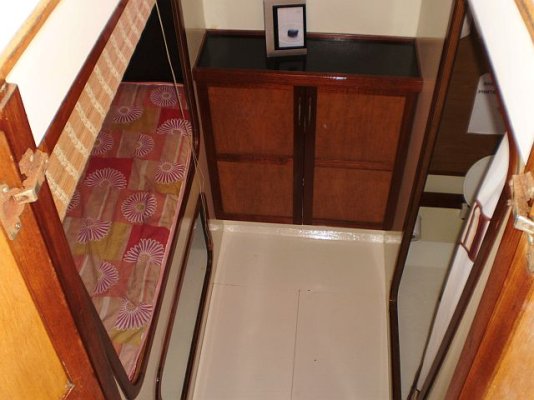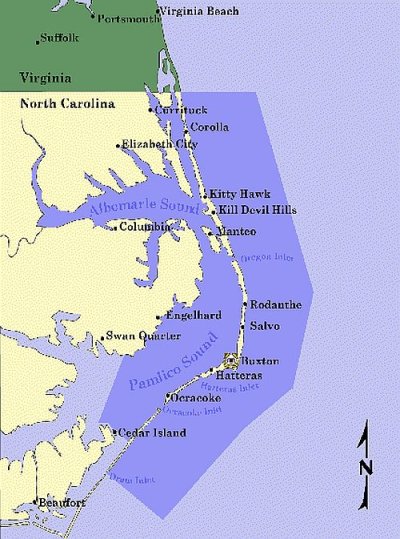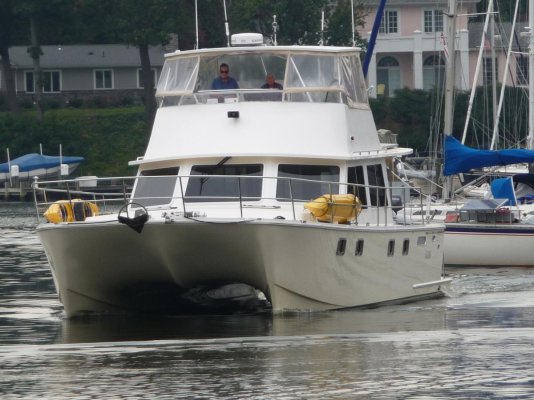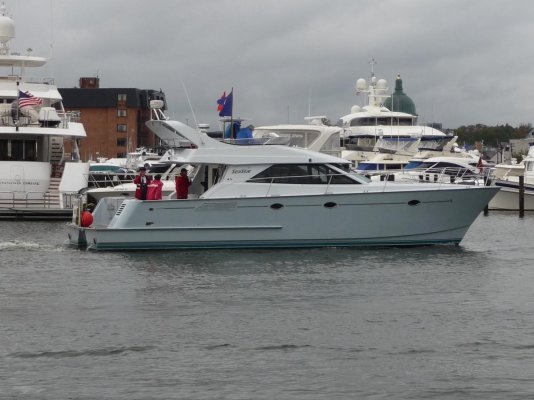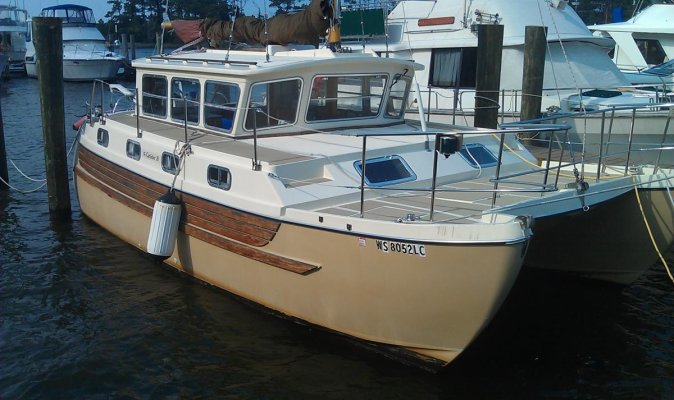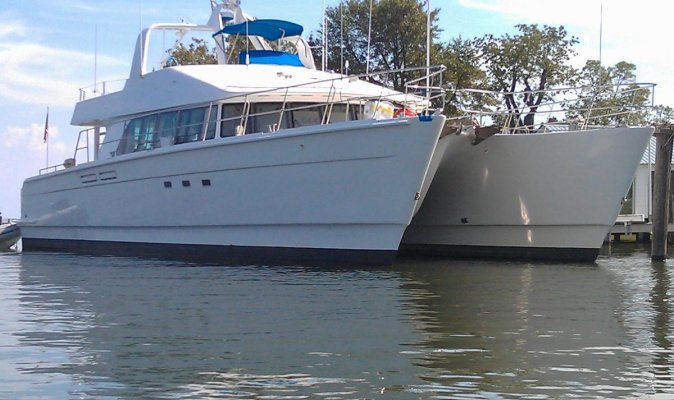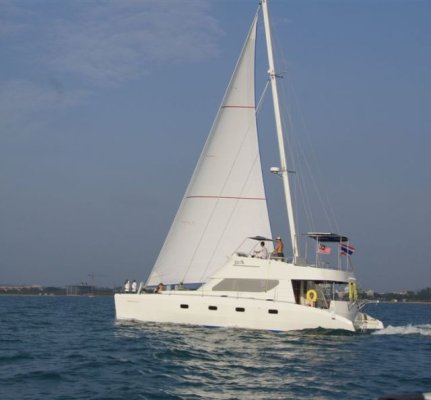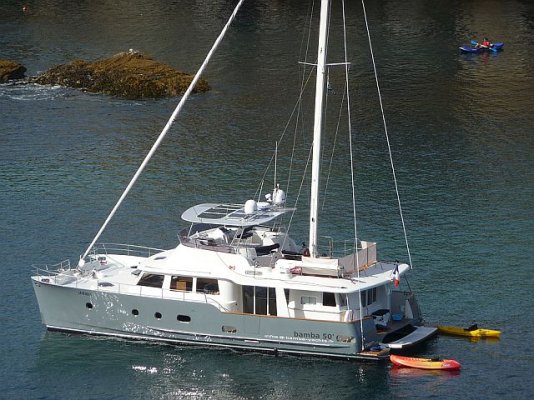brian eiland
Guru
- Joined
- Jul 17, 2013
- Messages
- 930
- Location
- USA & Thailand
- Vessel Name
- RunningTide
- Vessel Make
- 37 Louisiane catamaran
I was reading thru another subject thread that had a similar title, but it appeared to have gotten way off track in its discussions.
http://www.trawlerforum.com/forums/s3/powercat-trawlers-vs-traditional-trawlers-9998.html
So I thought I might start a new subject thread.
I'll open it up with very nice trawler style 62 footer that was designed by the late Malcolm Tennant of NZ. This was a custom built boat by an owner of several previous sailing-charter cats, that now wanted a powercat for cruising the Bahamas and beyond. that owner/builder subsequently sold it to a good fried of mine who had also previously owned a large sailing cat.
aware of...several of them being production mono-hulls. But as I read my own words, I can't help but think of this wonderful vessel I just spent a few days aboard in Palm Beach. It was recently grabbed up (purchased) by a good friend of mine for his own liveaboard & treasure hunting purposes, so it is not available. I'll present a few details and photos as an example of what I consider a really nice liveaboard cruising vessel that is not too audacious while accomplishing most of what you have in mind plus a few extras...great dive and explore boat.
I'll post some pics I took while visiting a year ago. Look at the interior room available in this vessel,....and that great galley and big saloon. One master stateroom in one hull, and two guest staterooms in the other.
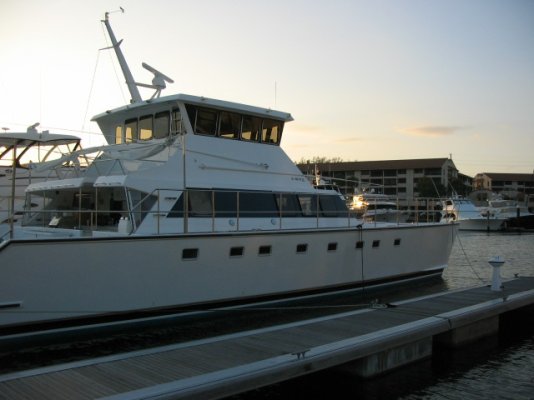
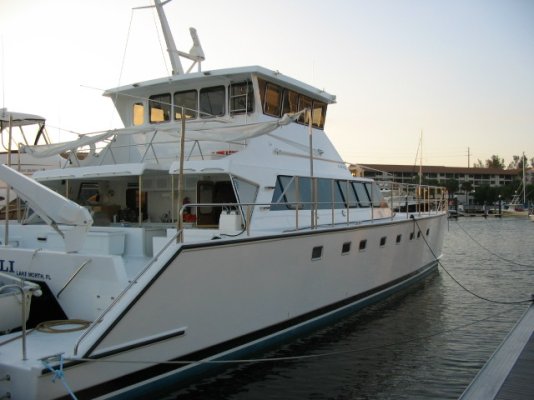
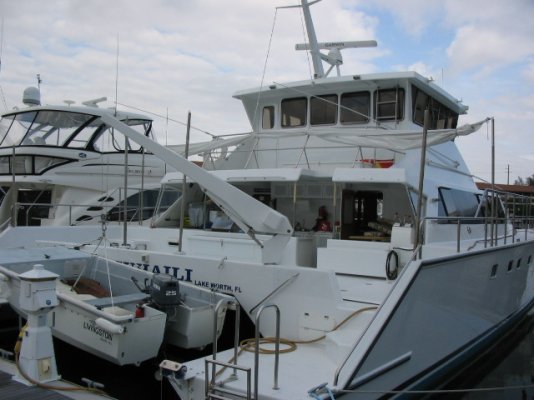
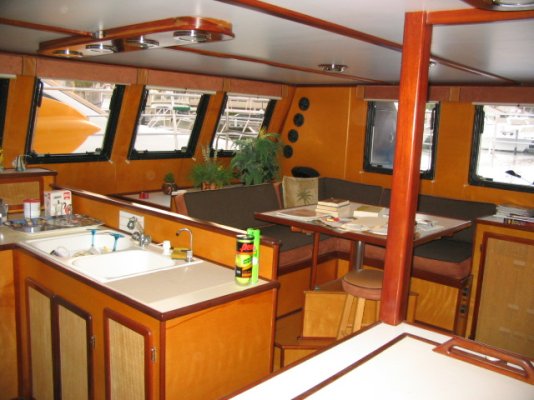
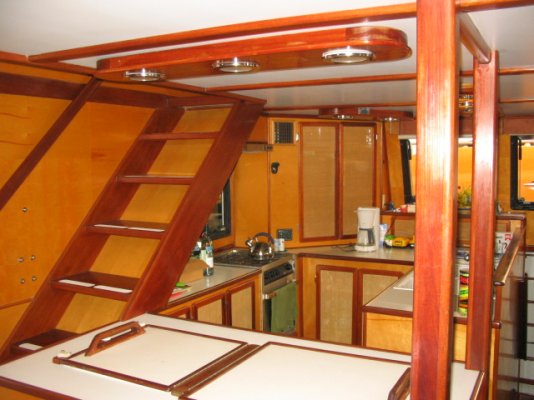
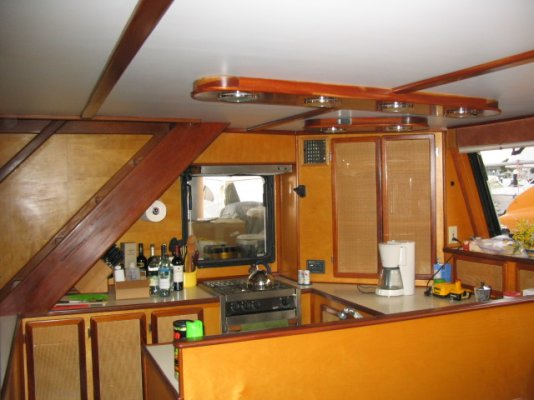


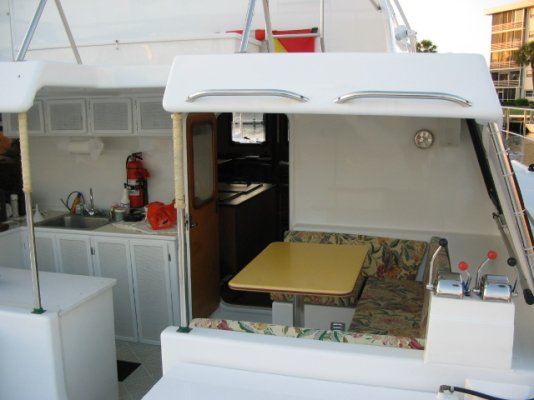
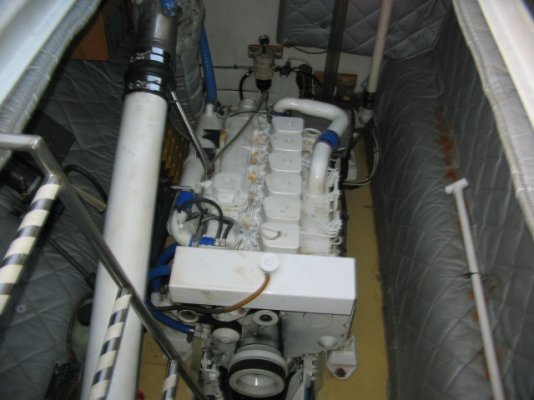
Then how about the great aft deck and its additional galley, outdoor grill, and dining area.
This vessel drafts 3... feet, and is powered by two 6 cyl Cummins engines of 210HP . It will do 17 knots while using a fraction of the fuel of many yachts this size. It is highly maneuverable with those twin props widely spaced apart. Its easy to get on and off the tender from those swim platforms, and in fact could easily carry two tenders (his and hers), or other water toys. It has a generator and a watermaker, and a highly insulated refrig box and freezer that only requires running one engine once every two days. Its self-sufficient. The cost...less than $1M. I envy his choice.
http://www.trawlerforum.com/forums/s3/powercat-trawlers-vs-traditional-trawlers-9998.html
So I thought I might start a new subject thread.
I'll open it up with very nice trawler style 62 footer that was designed by the late Malcolm Tennant of NZ. This was a custom built boat by an owner of several previous sailing-charter cats, that now wanted a powercat for cruising the Bahamas and beyond. that owner/builder subsequently sold it to a good fried of mine who had also previously owned a large sailing cat.
aware of...several of them being production mono-hulls. But as I read my own words, I can't help but think of this wonderful vessel I just spent a few days aboard in Palm Beach. It was recently grabbed up (purchased) by a good friend of mine for his own liveaboard & treasure hunting purposes, so it is not available. I'll present a few details and photos as an example of what I consider a really nice liveaboard cruising vessel that is not too audacious while accomplishing most of what you have in mind plus a few extras...great dive and explore boat.
I'll post some pics I took while visiting a year ago. Look at the interior room available in this vessel,....and that great galley and big saloon. One master stateroom in one hull, and two guest staterooms in the other.










Then how about the great aft deck and its additional galley, outdoor grill, and dining area.
This vessel drafts 3... feet, and is powered by two 6 cyl Cummins engines of 210HP . It will do 17 knots while using a fraction of the fuel of many yachts this size. It is highly maneuverable with those twin props widely spaced apart. Its easy to get on and off the tender from those swim platforms, and in fact could easily carry two tenders (his and hers), or other water toys. It has a generator and a watermaker, and a highly insulated refrig box and freezer that only requires running one engine once every two days. Its self-sufficient. The cost...less than $1M. I envy his choice.
Last edited:

